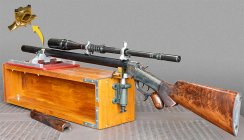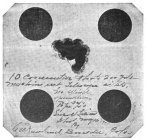Ned Ludd
Silver $$ Contributor
No doubt about it, even a few poor shots can make a tuner test very difficult to interpret correctly. I was not in any way denigrating Bryan's shooting abilities, or those of the people he had working on the testing. I know that Bryan is a phenomenal shooter, and I have to assume he trusts the shooting abilities of those that helped him out with those tests. However, just having several different people involved suggests the potential for greater difficulty interpreting all the results, and may have contributed to them reaching the conclusion they did, that's all.You're very right and it crossed my mind about his shooting ability. I wasn't going to and I will not question that. I'd know in a group or two if he can shoot or not but for now, will assume that he can and would be happy to help there if needed. At least to my ability to be of help. I'm blessed to have my own range and some good flagsbut I'm better at telling someone how to shoot than I am at shooting.
Lol!
Simply watching anyone shoot over flags and their gun handling shows me a lot about anyone's potential. If he's shooting during switches, I'd simply offer to do my best at calling the wind. Again, I'll assume he knows how to shoot small. No reason not to. You need to be proficient but not world class. The test is contingent upon every shot and bad calls marked accordingly. Things like stairstep groups that go up and to the right are not typically wind induced, from a rh twist bbl, for example. That actually plays pretty heavily in my evaluation of a tuner test, for that reason.
I'm certainly no tuner guru, but I have several and have had no difficulty setting them and observing firsthand what they can do, as well as observing that the optimal settings I found during testing could be reproduced on different outings. But that was all determined using the output from only one person; i.e. myself, and I can imagine that it might be far more difficult to evaluate when the data was produced by several different people.
I'm a little surprised Bryan's publication regarding tuner results has received as much attention at various shooting forums as it has. When I read something that appears to be very different than my own personal experiences, I tend not to pay much attention to it. Hopefully, anyone interested in using a tuner will chalk this up as only one point of view among many, and follow up with their own tuner research accordingly.













